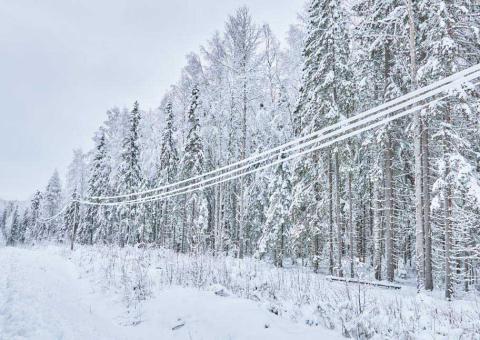Winter officially begins on Dec. 21, and while forecasters are predicting warmer-than-average temperatures in New England this season, Unitil is reminding customers not to let their guard down as storms that deliver a mixed bag of weather can be troublesome.
According to the winter outlook issued by the National Weather Service, the region is expected to see warmer weather with equal chances of below-average, near-average or above-average seasonal total precipitation during the period from December through February.
“Over the past few years we’ve seen a number of messy storm systems that have brought a mix of snow, sleet, rain and ice,” said Unitil External Affairs Director Alec O’Meara. “When people hear long-range winter forecasts calling for above average temperatures, many assume that means rainy weather but this isn’t necessarily the case. Warmer winter storms can still hover around freezing temperatures, which can make for wetter, heavier snow and less consistent forecasting.”
Storms accompanied by colder air typically produce a dry, fluffy snow that is less likely to build up on tree branches and electrical lines. As temperatures warm the snow becomes sticky and more problematic.
Additionally, warmer air aloft with colder air at the surface can increase the risk of freezing rain, which can lead to icing concerns.
“What we’ve seen in recent years is a reminder that even for hardy New Englanders, a warmer-than- average winter can still come with its share of headaches,” O’Meara said.
Regardless of the long-range winter forecast, Unitil encourages customers to have an emergency preparedness kit available at their home and in their vehicle in the event of severe weather during the winter months. Unitil recommends keeping three days’ worth of essentials on hand for each family member. Kits for the home should include flashlights and fresh batteries as well as a battery-operated radio and clock, bottled water, canned foods, a manual can opener, medications, tools, portable cellphone charger, a paper list of important phone numbers, and sanitation and first aid supplies.
A supply kit for your vehicle should include jumper cables, sand, a car charger for cellphones, a flashlight, warm clothes, blankets, bottled water and non-perishable snacks. Don’t forget to keep a full tank of gas.
Customers should also keep an eye on their vents for gas appliances and gas meters and carefully remove any snow and ice that may build up to prevent damage to utilities. Following a significant snow or ice storm, chimneys and vents should be cleared to prevent carbon monoxide from building up and potentially causing illness or even death. Carbon monoxide alarms should be installed inside homes and businesses.
A broom can also come in handy when clearing snow and ice from meters. Avoid using a shovel or kicking the meter to break up ice as it could cause damage. It’s also important to make sure that snow isn’t shoveled or plowed up against the meter or vent pipe. Icicles should be carefully removed from overhead eaves and gutters so they don’t fall and damage equipment or cause water to splash and freeze on the meter or vent pipe. Installing protection above a gas meter can help to keep ice from building up.
When a winter weather-related event approaches, it’s important to understand the differences in the criteria for weather advisories issued by the National Weather Service.
- A Winter Weather Advisory is issued when mixed precipitation (snow and ice, snow and sleet, or snow, ice and sleet) or light freezing rain causes travel impacts or less than 4 inches of snow is forecasted.
- A Winter Storm Watch is issued when winter storm conditions with 6 or more inches of snow are possible within the next 36 to 48 hours. The National Weather Service advises people in a watch area should review their winter storm plans and stay informed about weather conditions via NOAA weather radio or local radio or television stations.
- A Winter Storm Warning is issued when life-threatening, severe winter conditions that could lead to significant travel problems or power outages have begun or will begin within 24 hours. Anyone living in the warning area is advised to take precautions immediately.
For more information on storm safety and preparedness, click here.


